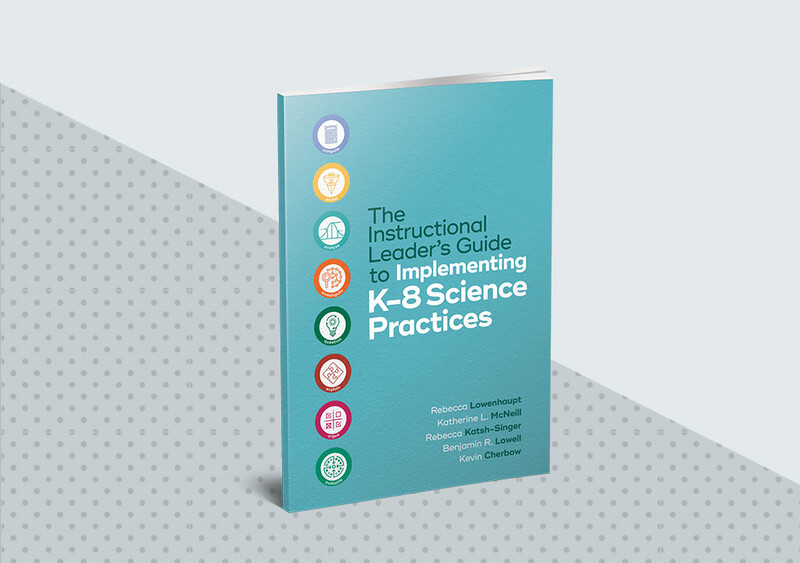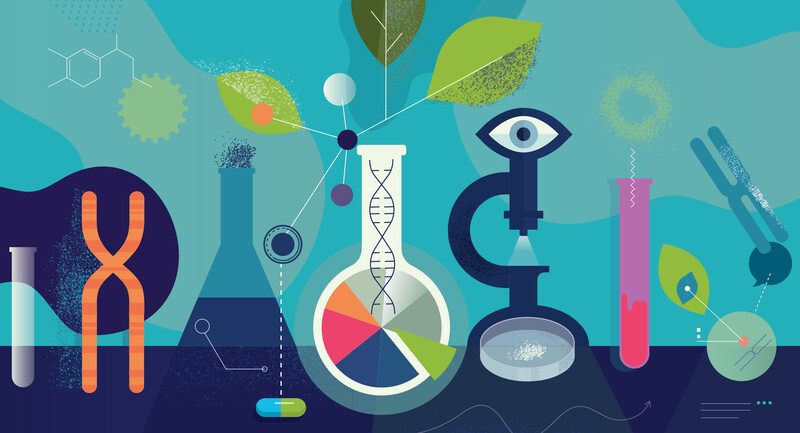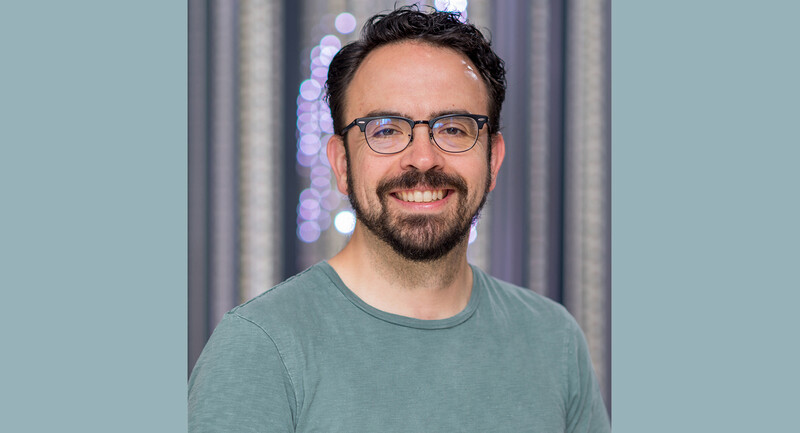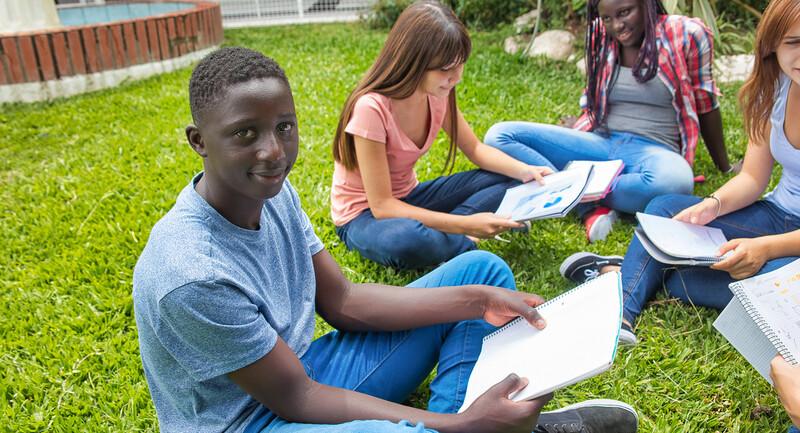It’s the first day of a new unit on ecology in Mr. Hernandez’s 9th grade biology class. He begins by showing students a newsclip about the boom of invasive Spotted Lanternflies in the U.S. Northeast; the insects are destroying trees and crops, such as apple orchards, and local governments are asking citizens to kill the bugs on sight. This inspires a flurry of conversation among the students as they recount their own experiences with Lanternflies over the summer. Students then work together to draw models of their environment, indicating how the Lanternflies might be affecting it, which leads to a new set of questions: What “counts” as the local environment? What did it look like before the Lanternflies got there, and what exactly are the bugs doing to it? How did they get here in the first place? Was it our fault? What else can we do to address the problem?
As they broaden their knowledge about this phenomenon, students prepare a presentation for the local parks department on how the department might reduce the impact of Lanternflies on the area. They suggest creating “park clean-up” days, where groups of volunteers learn how to identify Lanternfly eggs and remove them from trees. They also recommend modifying plant management practices to make parks more attractive to birds and other animals that might eat the Lanternflies.
A New Vision of Science Education
U.S. public schools are in the midst of a substantial reform of science teaching and learning, guided by A Framework for K–12 Science Education (National Research Council, 2012) and the Next Generation Science Standards (NGSS), which are based on the framework (NGSS Lead States, 2013). According to the National Science Teaching Association (NSTA), 49 U.S. states have adopted NGSS or standards based on the framework (n.d.). In this vision, learning centers on students doing the practices of scientists to ask, investigate, and answer questions about the natural world, as opposed to simply memorizing a body of facts or following a rigid “scientific method” (Osborne & Quinn, 2017).
Teachers should anchor their lessons in natural phenomena.
To implement this vision of science, teachers should anchor their lessons in natural phenomena. Phenomena are observable events that students can experience either directly or indirectly (e.g., through audio or video) and that require an understanding of important scientific ideas to explain (Lowell & McNeill, 2019). Take Mr. Hernandez’s unit on ecology. He was able to connect to his students’ experiences of Spotted Lanternflies and motivate them to both understand ecosystem dynamics and develop a scientifically sound solution to contain the insects to propose to the local parks department.
This approach contrasts with more traditional takes on ecology. Centering science units on meaningful and complex phenomena such as Spotted Lanternflies, rather than on generic ideas like “population and community ecology,” can help make science learning meaningful and relevant for all students—particularly those who have traditionally been underserved by science classrooms (Lee, 2020). Studies have shown that when students try to figure out natural phenomena, more of them see their class as a scientific learning community and themselves as valued members of that community (Penuel et al., 2023). As engaged learners, they’re more likely to score higher on standardized science tests because they see the value of science and grasp science ideas more fully than they would have in more traditional instruction (Krajcik et al., 2023).
Building Capacity Schoolwide
Transitioning to a phenomenon-based approach to teaching science will require teachers to move away from being the primary holder and dispenser of knowledge toward being more of a planner, facilitator, and guide. However, teachers will need time and resources to adapt to these new roles and learn about and implement new approaches. Instructional leaders—principals, assistant principals, coaches, and teacher leaders—have a crucial role to play in guiding this work.
Some of the most important resources to tap into are curricular materials that show teachers how to implement phenomenon-based instruction (Campbell & Lee, 2021). In addition to high-quality curricular materials, teachers and students benefit when teachers participate in well-designed professional development that focuses on how to use those materials (Lynch et al., 2019). Many curriculum developers offer supporting professional development; local or regional offices of education or regional or nationwide groups, such as the NSTA, offer support as well. Teachers can also benefit from working together and with instructional coaches to think through phenomenon-based science teaching and what it might look like in their context (Gibbons & Cobb, 2017). This will aid them as they consider how to adapt their existing curricular materials to align with this vision of science instruction.
School and district systems need to support the reform of science teaching. Multiple studies (e.g., Rigby et al., 2017) have shown that when teachers see alignment among the messages they’re receiving about instructional reform across their classroom, school, district, and state contexts, they’re more likely to take up those reforms. This message alignment can take many forms, from ensuring dedicated time for science in students’ schedules to communicating with families and the public about the importance of effective science instruction. Organizations like the NSTA can provide administrators with the resources, position papers, and summaries of relevant research they need to help them make this case.
Four Commitments for Instructional Leaders
Because many instructional leaders lack a background in science, they may be unsure how to provide science-specific support and feedback to teachers (McNeill, Lowenhaupt, & Katsh-Singer, 2018). As a result, they tend to focus on content-neutral approaches to teaching, such as on classroom management (Lowenhaupt & McNeill, 2019). Yet with appropriate support and tools, instructional leaders of any background can learn how to support science teachers as they shift to phenomenon-based approaches to teaching (McNeill et al., 2022).
Enter the Instructional Leadership for Science Practices project. This four-year National Science Foundation-funded project was led by coauthor Rebecca and her colleague Katherine McNeill and was staffed by coauthor Ben, as well as other researchers: Kyle Fagan, Rebecca Katsh-Singer, Kevin Cherbow, and Megan McKinley-Hicks. The project centered on developing tools to support instructional leaders and teachers in learning about the eight practices identified in the NGSS and incorporating them in everyday science instruction.
The eight science practices are as follows: (1) asking questions; (2) developing and using models; (3) planning and carrying out investigations; (4) analyzing and interpreting data; (5) using mathematics and computational thinking; (6) constructing explanations; (7) engaging in argument from evidence; and (8) obtaining, evaluating, and communicating information. The tools we created around these practices are featured in our book, The Instructional Leader’s Guide to Implementing the K–8 Science Practices (ASCD, 2021). The Science Practices Continuum Supervision Tool, which helps instructional leaders consider what it might look like for students to engage in one or more of the science practices in the classroom.
The Observation Form, which leaders can use as they observe science instruction to see where it falls on the continuum for NGSS 8 Science Practices.
The Post-Observation Conference Worksheet, which helps leaders use targeted feedback to debrief with teachers and create a plan to improve instruction of the science practices.
But to start, as instructional leaders, you must clarify your role as you support this shift. This will require four commitments: You must set the vision, learn alongside teachers, provide space for feedback and conversation, and minimize barriers for teachers to engage in this work.
1. Set the Vision
Historically, science has not been highly valued in many schools, particularly at the elementary level, where students receive, on average, fewer than 30 minutes of science instruction daily (Banilower et al., 2018). As an instructional leader, you set the vision for science by emphasizing that science matters. Ensure there is ample time in the schedule set aside for science and that all teachers understand that you value the vision of teaching science as a process of figuring out the natural world. If you can establish a clear, consistent vision of what science learning looks like by sharing concrete examples and models of phenomenon-based teaching, students and teachers will be more successful in achieving that vision.
As an instructional leader, you set the vision for science by emphasizing that science matters.
2. Learn Alongside Teachers
During their K–12 years, most teachers and leaders were taught science in a more teacher-centered, fact-focused way. That said, leaders need not be experts on phenomenon-based approaches to help teachers implement them. If you learn alongside your teachers, you will build trust and help them feel supported in this shift. In fact, attending professional development and planning meetings with teachers helps leaders build a more supportive and collaborative community as everyone works toward these reforms (Lowell, Fogelman, & McNeill, in press).
To start this journey, leaders can look over some of the professional development resources we list in our book (Lowenhaupt et al., 2021). For example, we have a sample agenda for a 90-minute session in which teachers dive into a science practice; a classroom video from our website shows what this might look like in practice. Teachers have taken these materials and run these sessions as part of their collaboration time and, consequently, have come to better understand the science practices.
3. Provide Space for Feedback and Conversation
This approach may initially feel a bit frustrating or scary for both teachers and students. Therefore, we encourage you to focus on iterative feedback and constructive conversations. Often, leaders are most comfortable in their roles as evaluators; however, relying solely on evaluation moments can frighten teachers and discourage them from trying new and challenging instructional approaches (Lowenhaupt et al., 2021).
To make this work, teachers need multiple opportunities to engage with phenomenon-based approaches to science teaching with the support of a trusted other. Taking on a coaching orientation in which you act as that trusted colleague can help teachers feel confident as they work toward meaningful instructional change (Woulfin, Stevenson, & Lord, 2023). Engaging in a repeated cycle of observing, sharing feedback and raising questions, learning something new together, and observing once again can help teachers (and you) learn how to implement this new vision of science.
4. Minimize Barriers
Finally, one of your most important roles as an instructional leader is to minimize barriers for teachers to engage in this work. This means providing them with curricular materials designed to support phenomenon-based teaching. We particularly like OpenSciEd, which currently offers materials for grades 6–8, with materials for grades 9–12 and K–5 in development. Learning in Places is also a great resource, offering materials for grades K–3. In addition, you can refer to materials that have received the NGSS Design Badge for top-rated science lessons and units; again, OpenSciEd features prominently here. Or you can look over materials that have been highly reviewed by EdReports, such as BSCS Biology: Understanding for Life and Amplify Science. Science teaching also requires resources, such as lab glassware or chemicals, so we encourage you to ensure adequate funding to support your science teachers. One of your most important roles as an instructional leader is to minimize barriers for teachers to engage in this work.
Given the time-intensive nature of this work and the fact that educators have many demands on their time, try to embed this work in the everyday functions of the school. Make this the focus of existing PLC times and include it in your teacher evaluation and observation practices. Moving away from an evaluative approach to a coaching framework can help you free up time. Also, what teacher time can you protect? What can you take off teachers’ plates as they engage in this challenging work?
Finally, many teachers are concerned about the effect of state standardized testing on their and their students’ futures. If you live in a testing-heavy state, how can you help teachers feel less burdened by these requirements? Keeping in mind that research shows that students who learn this way do better on tests, you might share with teachers that deep student engagement with science ideas—as opposed to a sole focus on achievement on state-mandated testing—is a more productive way to frame the goal of the coursework.
Science as a Living Practice
Almost all U.S. states have embraced a new vision of teaching and learning that encourages students to engage in science as a living practice of investigating the universe. As an instructional leader, you likely won’t become an expert in science, but you can give it more time, and, by doing so, you can have a major effect on your teachers and students.
A number of materials are currently available that give teachers concrete examples of what this learning looks like. Using those materials as your starting point, you can set up the context for your teachers and students to engage in meaningful, relevant, and powerful science teaching and learning.
Reflect & Discuss
➛ To what degree is your school’s
or classroom’s science
instruction phenomenon-based?
➛ As an instructional leader, have
you made any or all of the four
commitments to support this
shift in science instruction?
➛ If you lack a background in
science, how might you best
prepare to support this shift?
The Instructional Leader’s Guide to Implementing K–8 Science Practices
An accessible, engaging primer on the eight science practices at the heart of the Next Generation Science Standards (NGSS), providing K–8 instructional leaders with the grounding they need to ensure excellent science instruction in every classroom.










